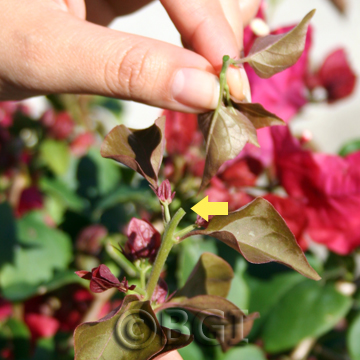
The webspinning two-spotted spider mite occasionally makes their home on bougainvillea. To the naked eye, spider mites look like tiny moving dots. Adult females, the largest forms, are less than 1/20 inch long. Check the undersides of leaves for mites, their eggs, and webbing; you will need a hand lens to identify them.
Chemical Contol
Spider mites frequently become a problem after the application of insecticides. Such outbreaks are commonly a result of the insecticide killing off the natural enemies of the mites, but also occur when certain insecticides stimulate mite reproduction.
Natural Control
Cleaning around the plant is your best solution. Debris tends to collect at the base of plants, and this is where the adults lay their eggs. Some larva may also “winter over” in this debris. Removing leaves and other debris from around plants is an excellent method for controlling them. Weeding provides an alternate food source for pests, so areas around plants should be weeded and mulched.

